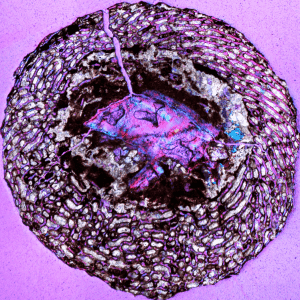
Paleontologists have discovered an ancient nesting site in China where the oldest fossilized dinosaur embryos to date have been found. The find is extremely exciting from multiple perspectives. For one, many embryos in various development stages have been found which will certainly help scientists better their understanding of how dinosaurs grew (how fast, what bones grew first, how they hatched etc.), and also organic tissue has also been discovered among the fossilized bones and eggs. So, at the same time this is a double milestone as the site holds the oldest organic material ever seen in a terrestrial vertebrate.
The discovery was made in a bone bed in Lufeng County, China by researchers at University of Toronto in Mississauga, Canada, led by Robert Reisz. At the site, sauropodomorph fossils — bipedal dinosaurs with long necks — were discovered dating to the Early Jurassic period, 197 million to 190 million years ago. Among the eggshells, some 200 disarticulated bones were also found or the oldest known traces of budding dinosaurs.
“Most of our record of dinosaur embryos is concentrated in the Late Cretaceous period,” says David Evans, curator of vertebrate palaeontology at the Royal Ontario Museum in Toronto. “This [study] takes a detailed record of dinosaur embryology and pushes it back over 100 million years.”
Upon closer inspection, the paleontologists discovered the oldest organic material ever seen in a terrestrial vertebrate among the bone-tissue samples.
“That suggests to us that other dinosaur fossils might have organic remains,” Evans says. “We just haven’t looked at them in the right ways.”
The researchers can’t tell for sure what kind of dinosaurs the embryos they find belong to, however their safest best lies with a sauropodomorph, since the remains are similar in many ways to intact embryonic skeletons of Massospondylus. Still they couldn’t pinpoint an exact match of any known dinosaur genus, so for now the embryos have been attributed to a new species dubbed Lufengosaurus.
The embryos might yield important clues that will help researchers learn how sauropodomorphs were able to grow to be 9 metres long, larger than any other terrestrial animal alive during their heyday. When fossil embryos in various development stages were compared, the researchers found evidence of rapid, sustained embryonic growth and short incubation times.
Findings were reported in the journal Nature.






